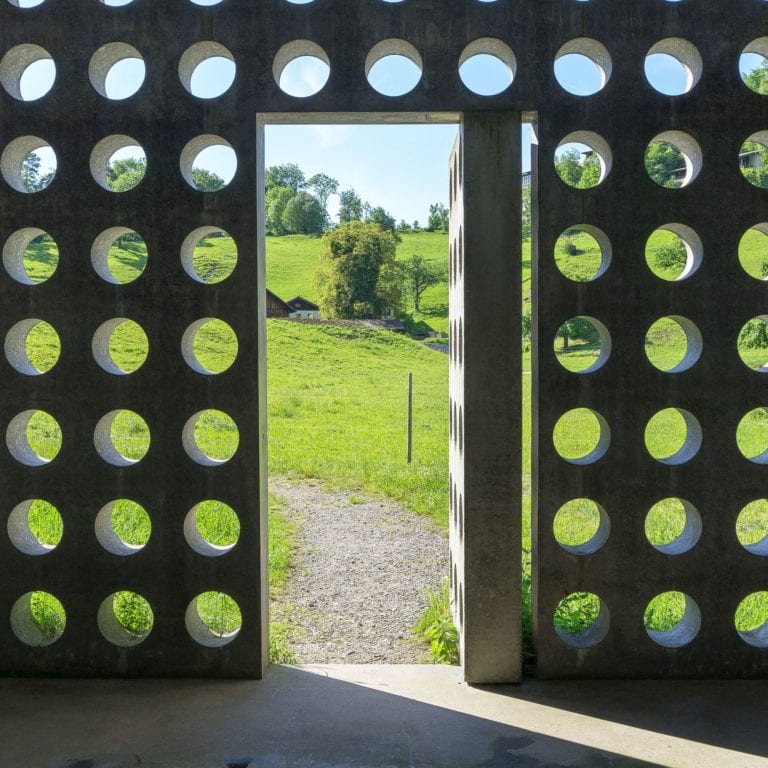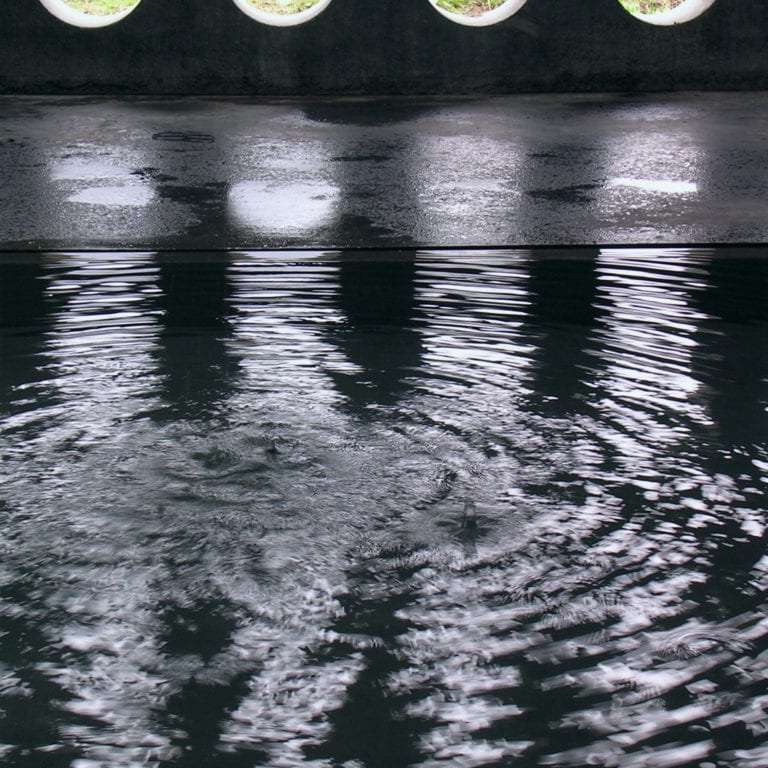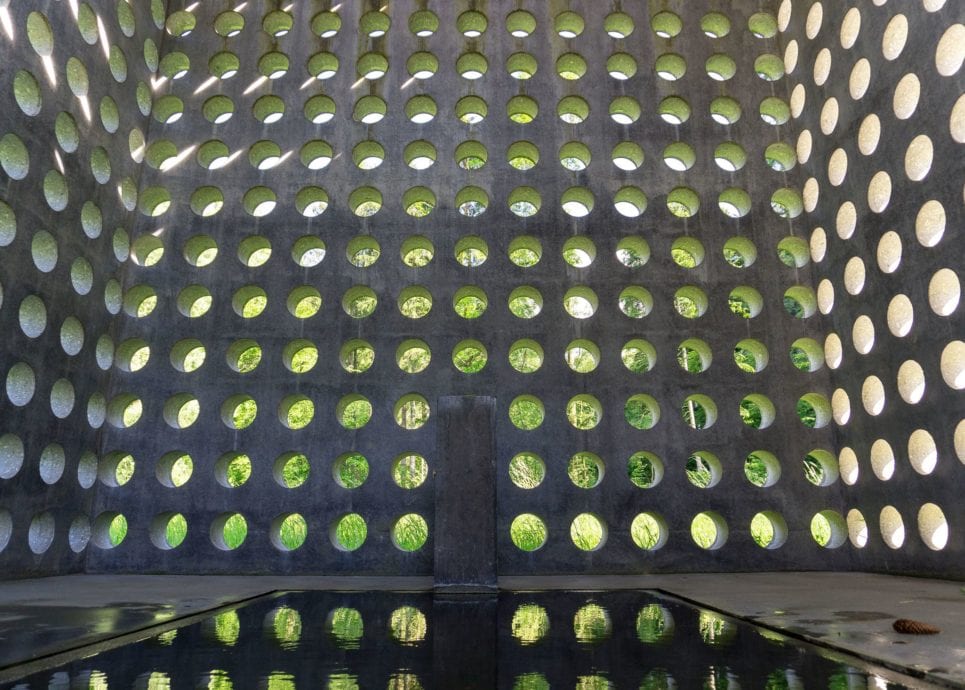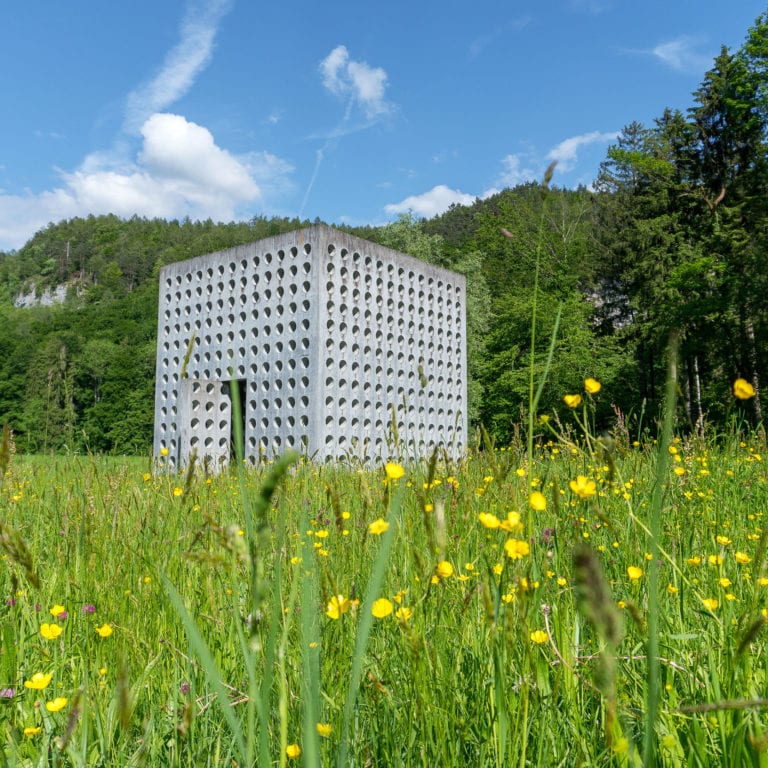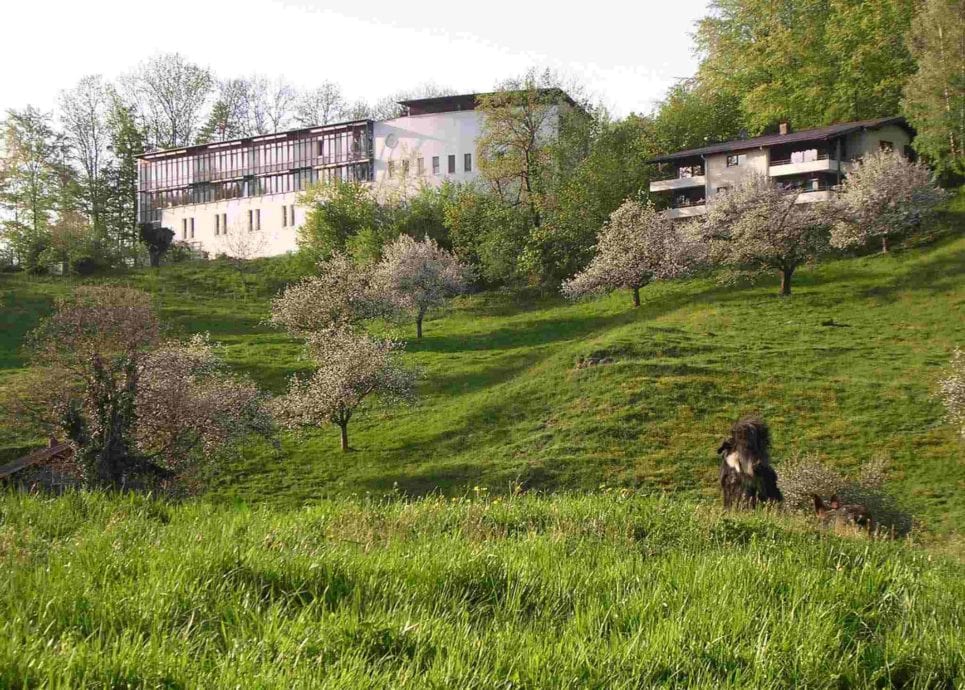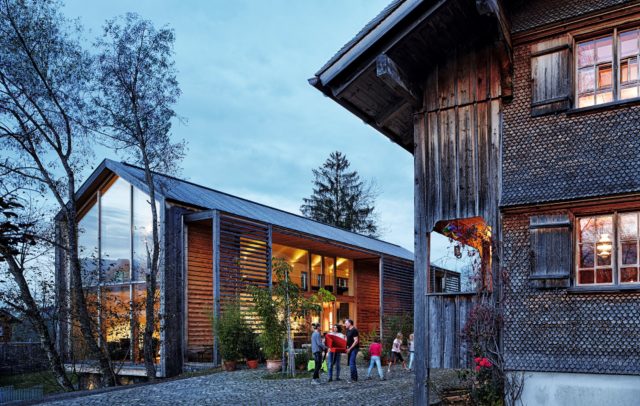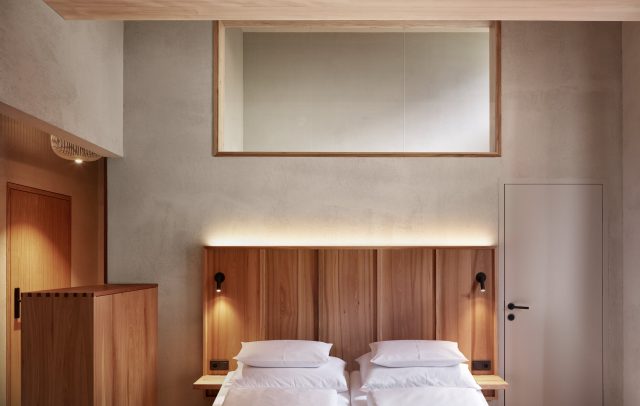Water is life
The Wasserhaus Sankt Arbogast water pavilion
The Wasserhaus Sankt Arbogast is a 5×5 m concrete cube erected in a valley basin of Arbogast, a district of Götzis. A true masterpiece of engineering, its walls and ceiling are perforated by 820 precisely drilled round openings.
Those who enter are confronted with a water basin. The drinking water refracts light and reflects the surrounding nature. This unique space is one of peace and contemplation, a place to reflect upon the life-giving and at-risk nature of water.
Interior, exterior
Although the cube seems permeable, its walls nevertheless separate the inside from the outside. Visitors are transported to an entirely different world of perception. It is a place of meditation in which you can enjoy tranquillity and fresh spring water, stare into the water’s surface, follow the traces of light, feel the sun or the wind, and listen to the rain as water drips through the roof onto the ground and into the water basin.
A precious resource
For many years now, visitors and friends of the St. Arbogast Youth and Educational Centre have used donations to finance the “Dorfbrunnen in Afrika” (Village Fountains in Africa) project. During the official opening ceremony in 2003, the four corners of the pavilion were blessed with water from Australia, Senegal and the Jordan and Ganges rivers.
Arts and education
The Wasserhaus Arbogast water pavilion is a project run by the nearby St. Arbogast Youth and Educational Centre. Built in 1993 according to plans designed by Vorarlberg architects Hermann Kaufmann and Christian Lenz, this is a space dedicated to creativity and the arts. The St. Arbogast Kunstkreis organisation for the arts regularly organises exhibitions and was the driving force behind the creative selection of architects for the water pavilion. A design by local Vorarlberg artist Fridolin Welte was selected and architect Christian Lenz was responsible for the structural implementation.
Arbogast: the story behind the name
The village was named for St. Arbogast, who was a bishop in Strasbourg in the year 550. The name Arbogast is derived from the Old High German and means “guest who becomes heir.” This is a fitting moniker for the role of the Bildungshaus, which sees itself as a place where no guest remains a stranger. Each visitor “inherits” something to take with them.
All roads lead to Arbogast
Arbogast is situated along the road from Götzis to Klaus and is readily accessible by bus from the Götzis train station. There are several walking and hiking trails around the Wasserhaus water pavilion and the Arbogast education centre, which are accessible all year round. In addition, there is a scenic hiking trail from Götzis through the Örflaschlucht gorge.
Food and drink tip: The café of the St. Arbogast Youth and Educational Centre is open all year round. Guests are very welcome.
- More information about the St. Arbogast Youth and Educational Centre:
www.arbogast.at

